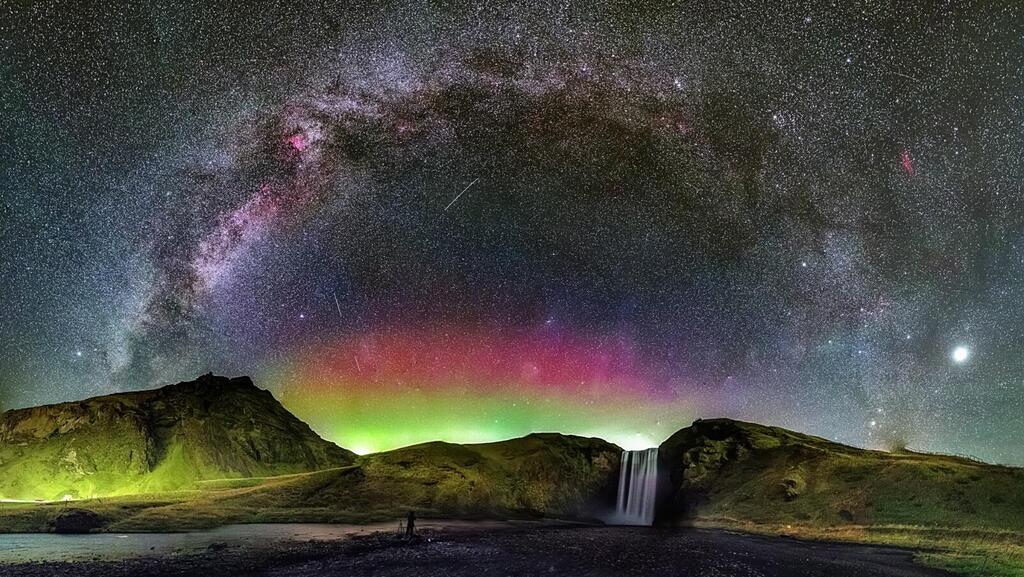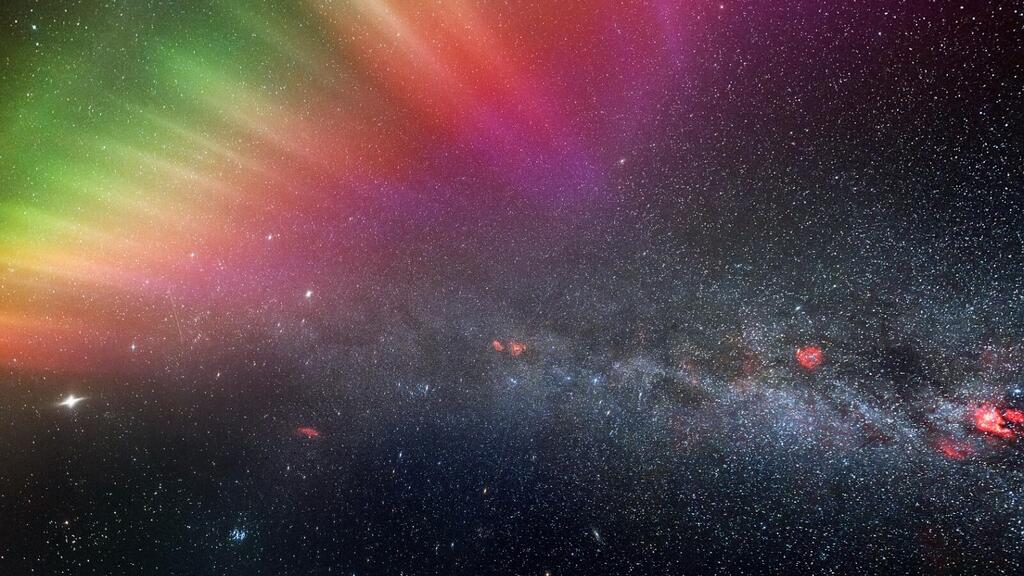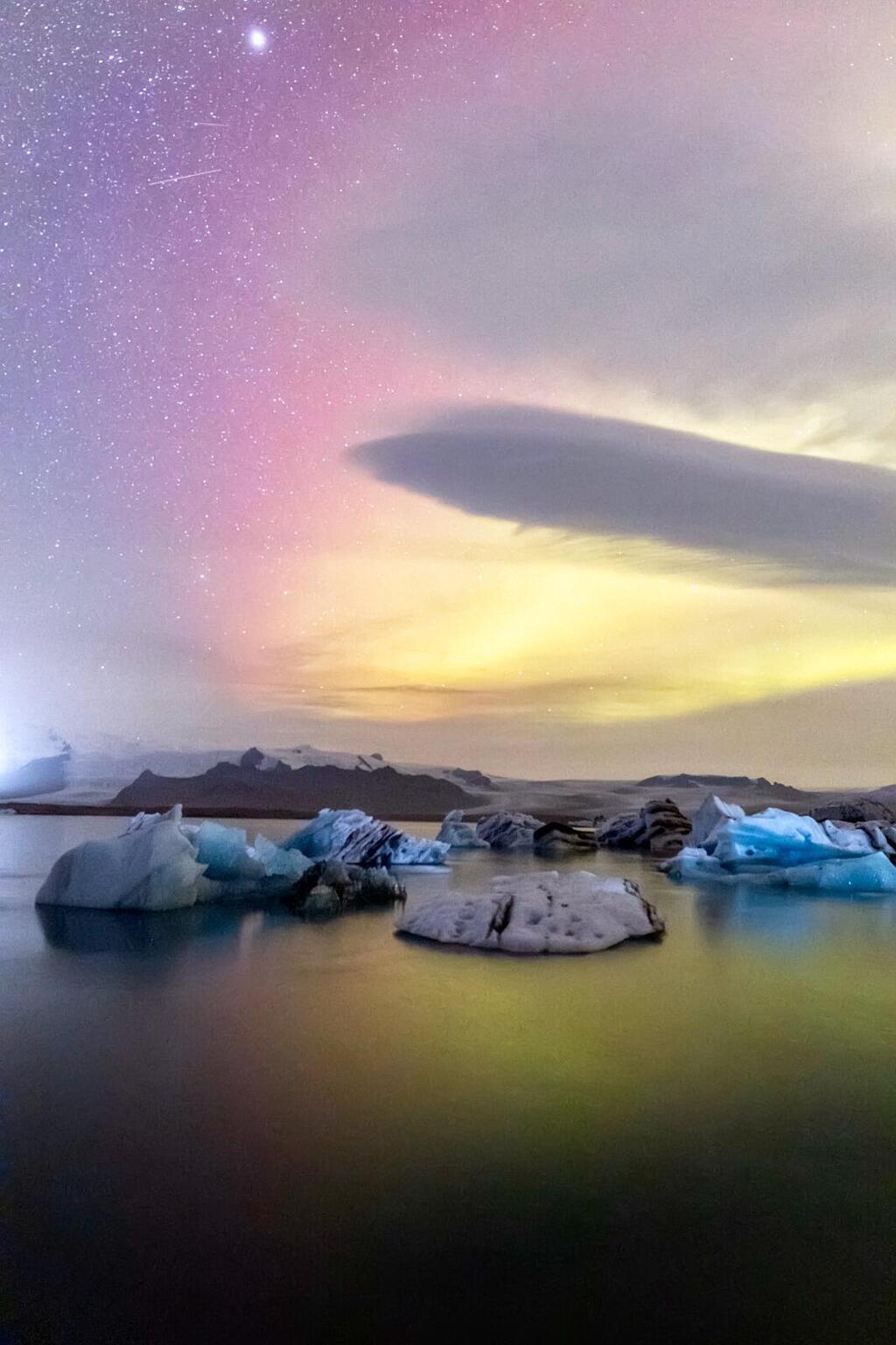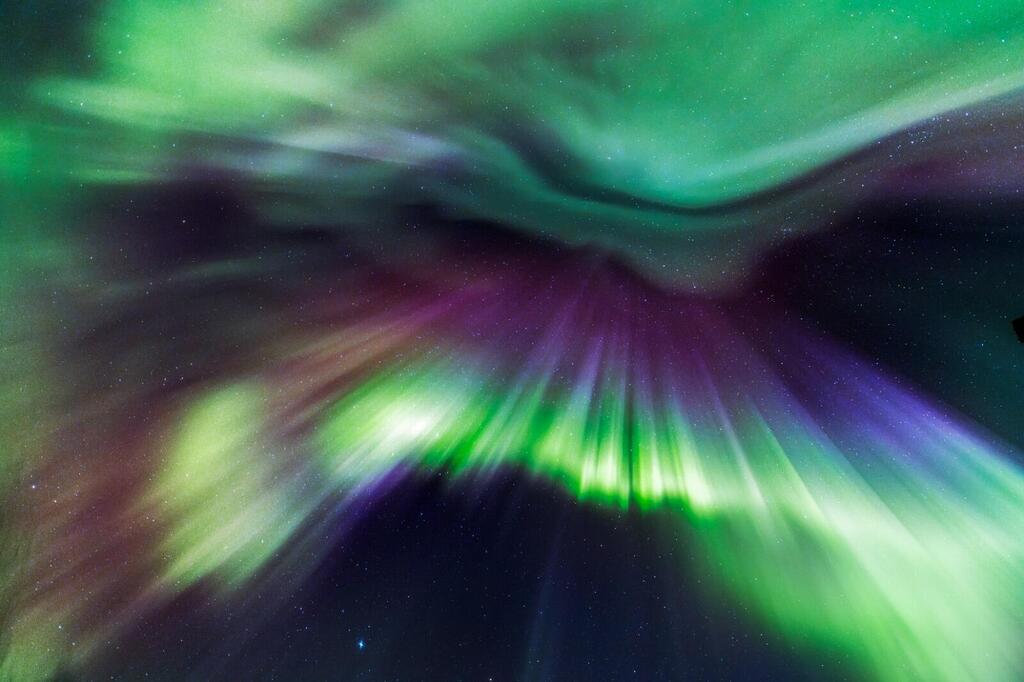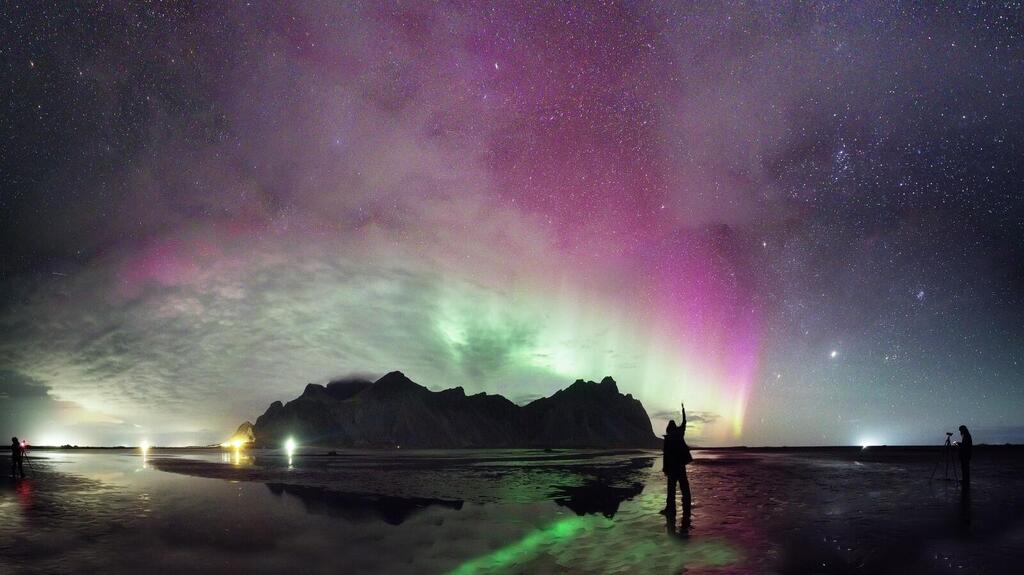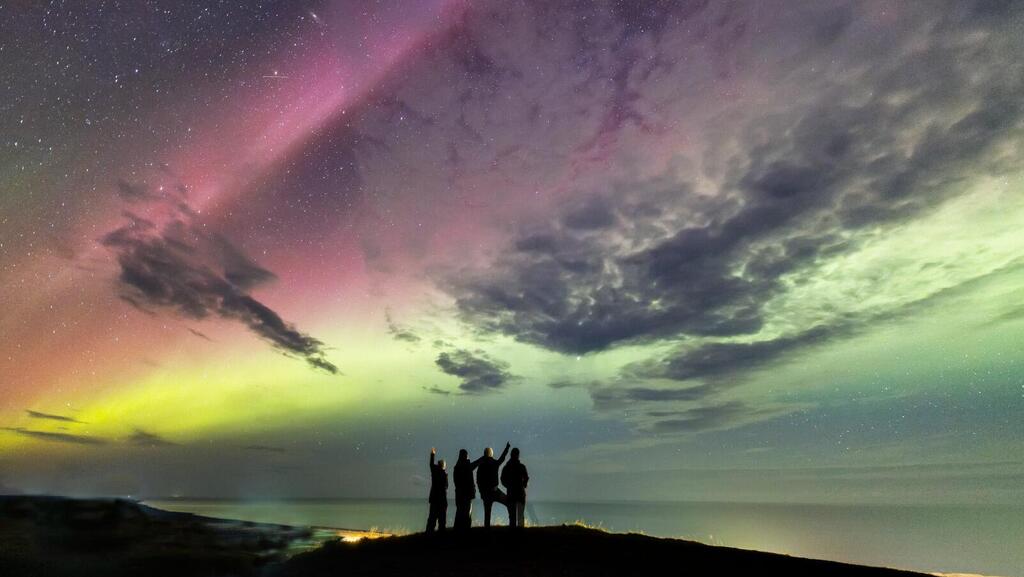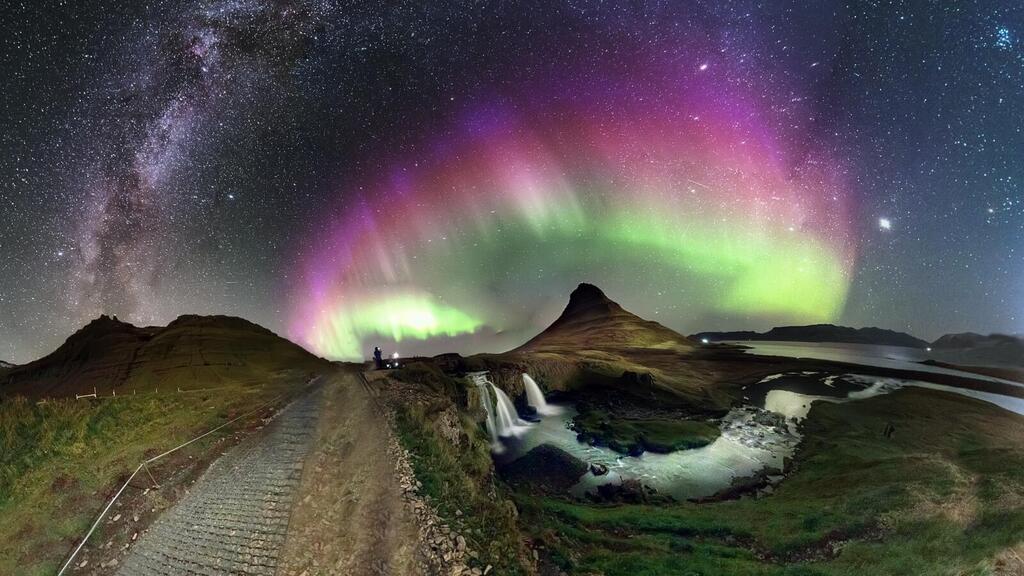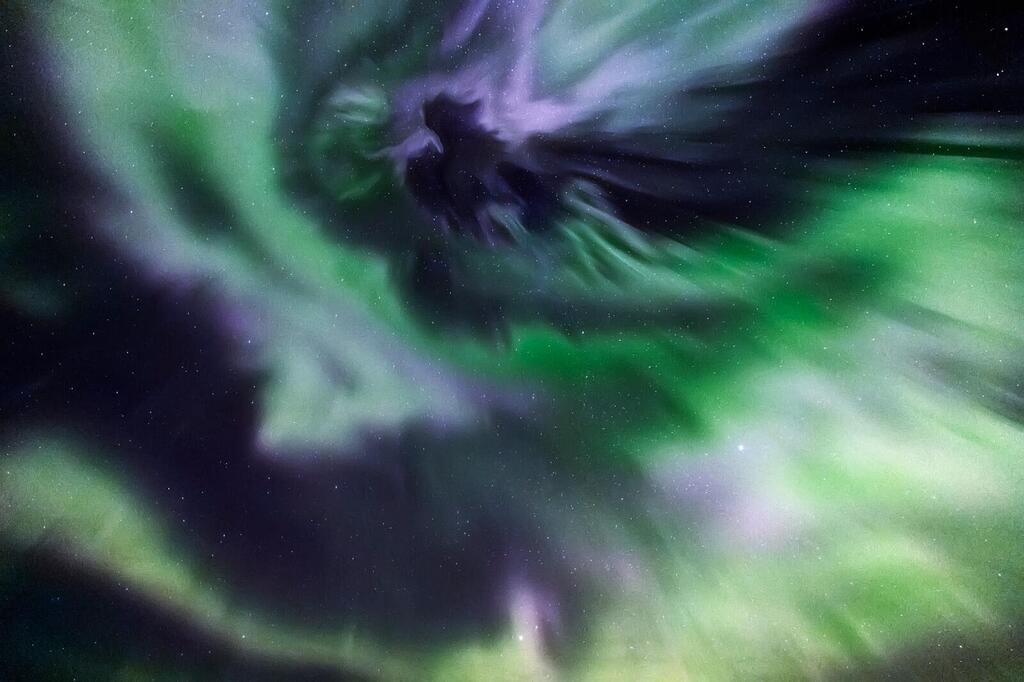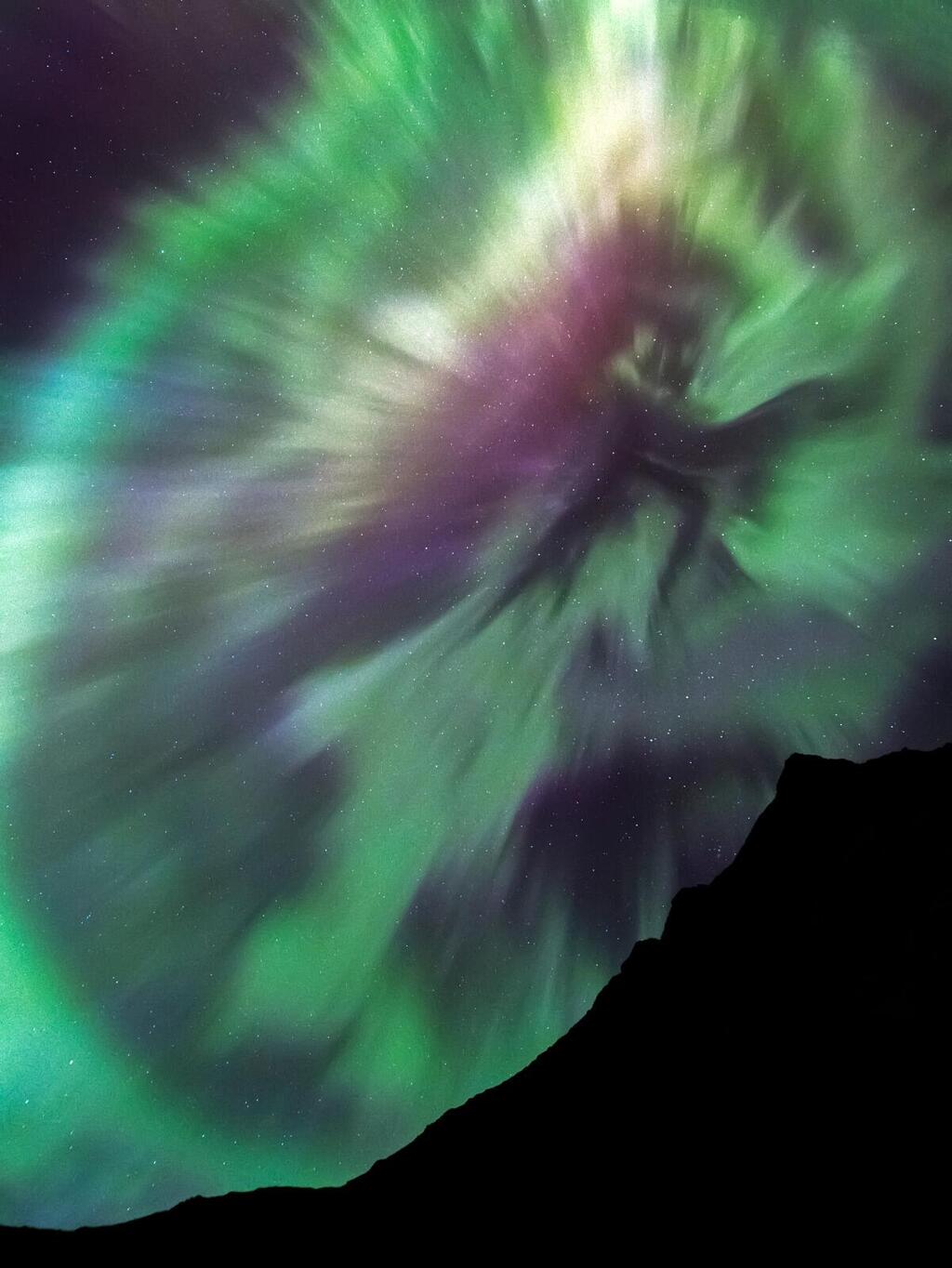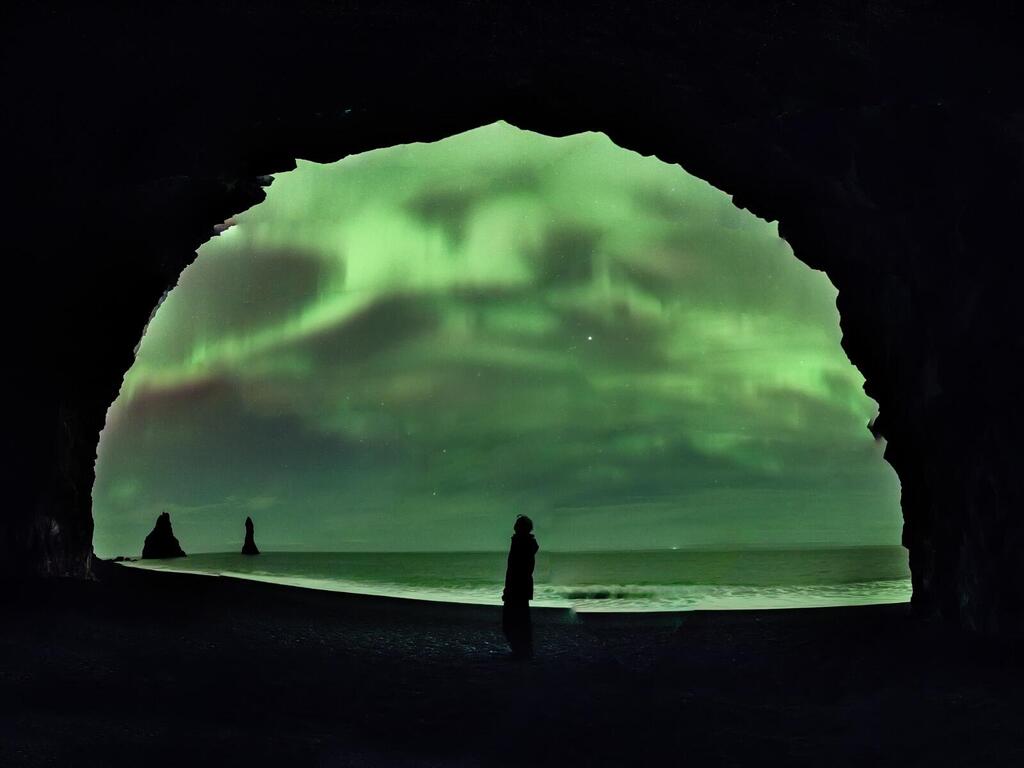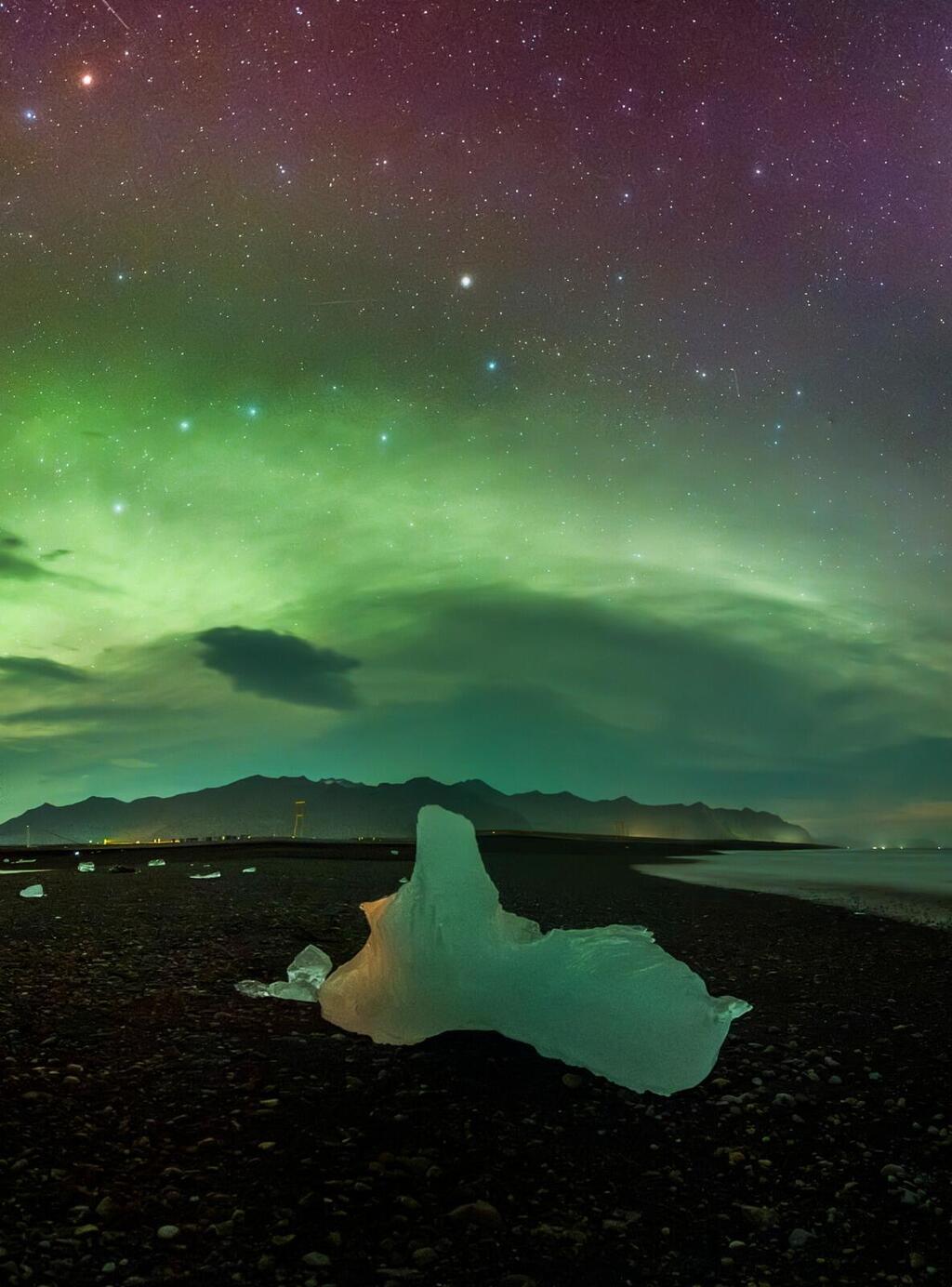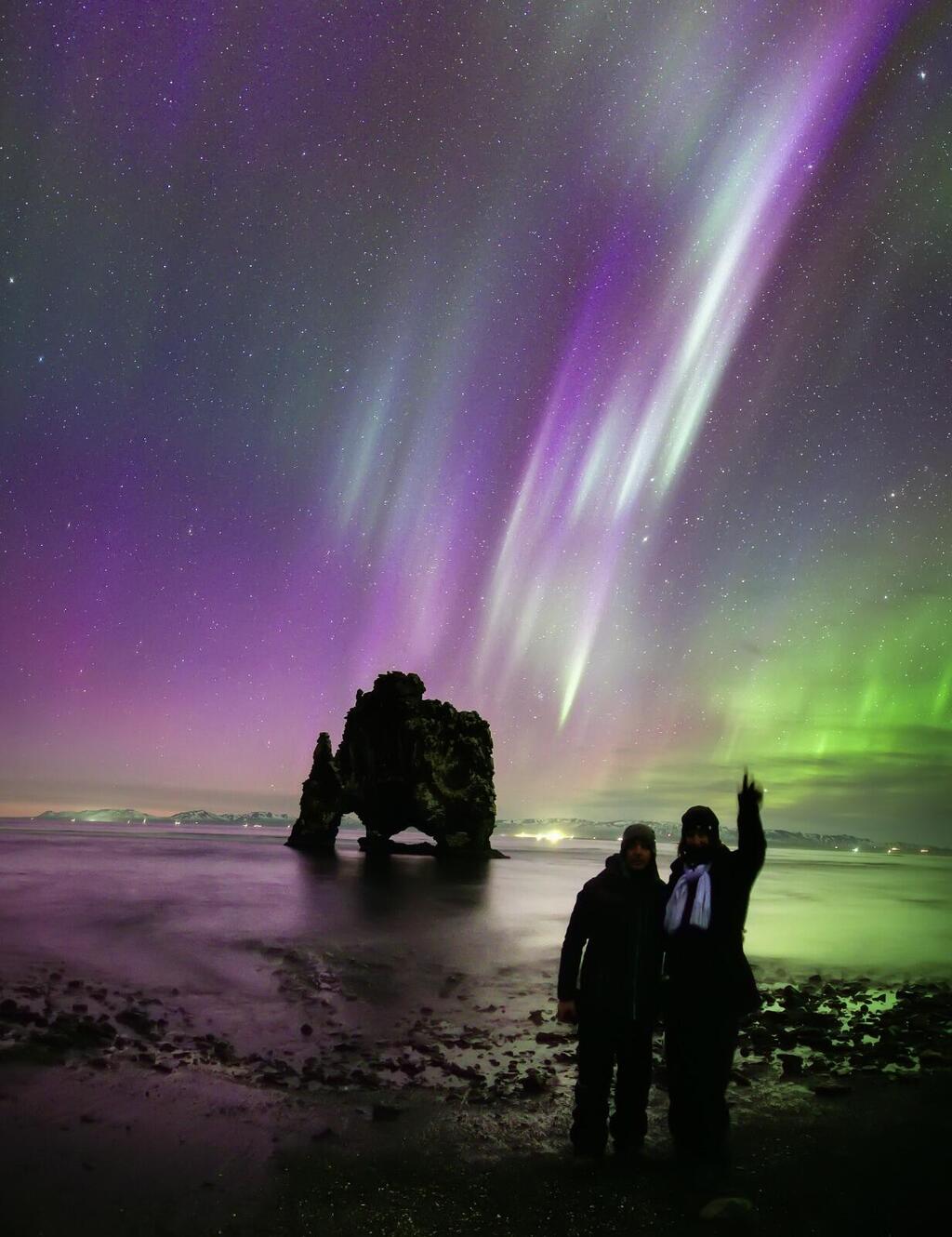Getting your Trinity Audio player ready...
"I’ve never seen the aurora this powerful; it was one of the strongest geomagnetic storms Iceland has seen in recent years," says Roi Levi, an internationally awarded landscape and astronomy photographer. Levi recently returned from a photography tour in Iceland with awe-inspiring photos, some even shared on NASA's Instagram account.
Nearly a year ago, Levi forecasted that 2024 would be a peak year for observing the Northern Lights on Earth. “Aurora,” he explained then, “is the Latin word for the polar lights—Northern Lights in the Arctic and Southern Lights in the Antarctic. They come from the sun, where explosions create geomagnetic storms. The solar wind then carries particles to Earth, where they collide with our atmosphere and create colors, mostly green, but sometimes rare reds, purples, pinks, and even blues. You can see nearly the full RGB spectrum—red, green, blue, pink, and purple."
(Video: Roi Levi)
Levi explains that the solar maximum, the sun’s peak period of activity, occurs roughly every ten years, lasting around two years before declining to a minimum. “We’re currently in the fifth year of a solar maximum cycle,” he said, “and scientists believe it could last until the end of 2026. This year, we’re expected to see the most intense solar activity of the decade. It will be the best time to witness the aurora, with incredible, enhanced, and colorful displays.”
Levi emphasized, “The next solar cycle, Solar Cycle 26, will start in 2030, peaking in 2035. So, anyone who doesn’t travel in the next year or two may have to wait about a decade to see auroras this intense.”
The scientists’ predictions, along with Levi’s, have proven true. "I’m still buzzing from the geomagnetic storm we experienced," he said, following his return from Iceland, where he led a photography tour. “We saw an aurora with a KP index of 8, just one step from the maximum level of KP 9. The sky was at an intense storm level—the aurora spiraled like a snail, forming crowns across the entire sky. It was a sight I’d never seen, and this was my fourth trip to Iceland this year alone."
Levi’s tours, limited to five participants, are physically demanding and not for everyone. "I have one rule—'Aurora before sleep,'" he says. “I make it clear upfront: whenever there’s aurora activity, we go wherever necessary to photograph it, no matter how cold or tired we are. For example, on our first night in Iceland, there was only one clear area in the southeast, near Diamond Beach, so we drove there, even though it took seven hours. This was our routine for ten days, averaging about seven hours of driving daily.”
At night, while participants sleep for five to six hours, Levi stays up studying maps, planning the next location. "I told them a Polish mother’s saying," he laughs, "'Don't worry; we’ll have plenty of time to sleep in the grave. Now is the time to live.’”
Few people are as passionate about solar explosions as earthly ones, and Levi is undoubtedly one of them. “When I saw that there was a significant solar flare on September 10, I knew we’d feel it here on Earth within two or three days. I checked the maps for where it would be visible, and we drove to those spots. Boom! We were in the right place—the sky filled with lights that moved fast. The aurora behaved differently this time, starting as pillar-like curtains descending and then transforming into arching crowns, each with a circular motion. It repeated like this all night, and everyone at the beach couldn’t stop shouting with excitement. Even back at the hotel, with the lights off, we could still see the magnetic activity in our minds. The colors stayed with us even as we tried to sleep; this storm was transformative—a once-in-a-lifetime experience.”
What’s next for Levi? “I still don’t feel I’ve reached my peak. I want to see the highest KP index, KP 9. That’s my goal, and according to forecasts, we have until July 2025 to enjoy strong Northern Lights before the current solar maximum ends.”
Get the Ynetnews app on your smartphone:





